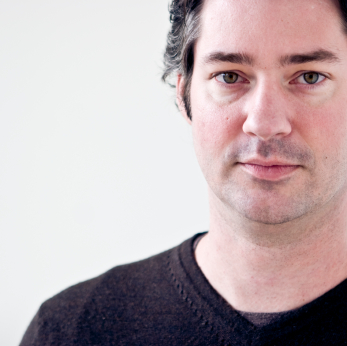Impact of Fear and Anxiety

Fear is a human emotion that is triggered by a perceived threat. It is a basic survival mechanism that signals our bodies to respond to danger with a fight or flight response. As such, it is an essential part of keeping us safe.
However, when people live in constant fear, whether from physical dangers in their environment or threats they perceive, they can experience negative impacts in all areas of their lives and even become incapacitated.
How fear works
Fear prepares us to react to danger. Once we sense a potential danger, our body releases hormones that:
- Slow or shut down functions not needed for survival (such as our digestive system)
- Sharpen functions that might help us survive (such as eyesight). Our heart rate increases, and blood flows to muscles so we can run faster.
Our body also increases the flow of hormones to an area of the brain known as the amygdala to help us focus on the presenting danger and store it in our memory.

Once the fear pathways are ramped up, the brain reacts in predicable ways.
The brain reacts immediately to signals from the amygdala, instead of more rational processing.
When in this overactive state--sometimes called "the amygdala hyjack"--the brain perceives events as negative and remembers them that way.
The brain stores all the details surrounding the danger—the sights, sounds, odors, time of day, weather, and so forth.
These memories tend to be very durable, although they may also be fragmented.
The sights, sounds, and other contextual details of a fearful event may bring back the memory, or they may cause us to feel afraid without consciously knowing why. Because these cues were associated with previous danger, the brain may see them as a predictor of threat.
Reacting to cues were associated with previous danger as a predictor of threat, often happens with post-traumatic stress disorder (PSTD).
For example, a soldier who experienced a bombing on a foggy day might find himself panicking when the weather turns foggy—without knowing why.
- 1 of 6
- 2 of 6
- 3 of 6
- 4 of 6
- 5 of 6
- 6 of 6
Impact of chronic fear
Living under constant threat has serious health consequences.
- Physical health. Fear weakens our immune system and can cause cardiovascular damage, gastrointestinal problems such as ulcers and irritable bowel syndrome, and decreased fertility. It can lead to accelerated ageing and even premature death.
- Memory. Fear can impair formation of long-term memories and cause damage to certain parts of the brain, such as the hippocampus. This can make it even more difficult to regulate fear and can leave a person anxious most of the time. To someone in chronic fear, the world looks scary and their memories confirm that.
- Brain processing and reactivity. Fear can interrupt processes in our brains that allow us to regulate emotions, read non-verbal cues and other information presented to us, reflect before acting, and act ethically. This impacts our thinking and decision-making in negative ways, leaving us susceptible to intense emotions and impulsive reactions. All of these effects can leave us unable to act appropriately.
- Mental health. Other consequences of long-term fear include fatigue, clinical depression, and PSTD.
So whether threats to our security are real or perceived, they impact our mental and physical wellbeing.
Other possible consequences
Post-traumic-stress disorder (PTSD)
What is post-traumic-stress disorder (PSTD), and what can you do to reduce your risk?
 The term Post-Traumatic Stress Disorder (PTSD) was coined in the 1970s, in response to the high number of Vietnam veterans suffering from a collection of psychological symptoms after returning from war. But accounts of PTSD have been noted in various forms throughout history, and the disorder is not limited to veterans of war.
The term Post-Traumatic Stress Disorder (PTSD) was coined in the 1970s, in response to the high number of Vietnam veterans suffering from a collection of psychological symptoms after returning from war. But accounts of PTSD have been noted in various forms throughout history, and the disorder is not limited to veterans of war.
PTSD generally appears after an individual has suffered a traumatic or painful event, such as a car accident, kidnapping, natural disaster, abuse, seeing a friend or family member suffer a trauma, or death of a loved one. Symptoms include prolonged states of anxiety (racing heart, sweating), flashbacks of the event, depression, avoidance of any activities that might trigger memories of the event, and difficulty sleeping. Like most health conditions, PTSD is not a one-size-fits-all disorder. The severity of the symptoms, as well as how long they last, vary from person to person. The most important thing someone who may be suffering from PTSD can do is to get professional help.
New research indicates that you may be able to bolster yourself against PTSD by practicing resilency-enhancing strategies. The National Institute of Mental Health recommends the following to reduce your risk of experiencing the disorder:
- Developing a strong support network of healthy relationships so that you have someone to turn to if you need help.
- Focusing on your own positive qualities, including your courage in the face of danger, trauma, or hardship.
- Responding calmly and effectively to dangerous situations, even when you are afraid.
In addition, spirituality can sometimes help you find meaning in difficult circumstances. Many researchers have observed post-traumatic growth, a period during which a person becomes stronger and more peaceful as a result of having survived a traumatic experience.
Economic costs
A 2012 Gallup poll of 31 countries found that less than half of adults surveyed reported feeling safe walking alone at night.
There is serious global impact to this statistic—when people feel less comfortable venturing out in the evening to work or buy goods, the economy suffers.
Community impact
When groups of people in our communities fear for their safety on a daily basis because of the color of their skin or their gender expression or other perceived identity, this injustice and resulting trauma impacts us all. We cannot have a safe community until all members of the community are safe.
Inherited trauma
Is it possible to experience fear and anxiety because of trauma that didn't even happen to you? Some researchers say yes.
The research in this area is still evolving, but there is some evidence that it is possible to inherit the impact of trauma from our ancestors. For example, some children and grandchildren of Holocaust survivors may have a higher risk for anxiety, depression, and chronic fear. Descendants of survivors of other massive traumas, especially slavery and attempted genocide, often report symptoms that are similar to those experienced by the people who endured the traumas themselves. As a result, communities of African Americans, Indigenous people, and other marginalized groups may experience a shared sense of grief and ongoing fear. This inherited trauma is often compounded by the reality of ongoing discrimination and brutality.
The legacy of trauma. (2020). Retrieved from https://www.apa.org/monitor/2019/02/legacy-trauma
Danieli, Y., Norris, F., & Engdahl, B. (2017). A question of who, not if: Psychological disorders in Holocaust survivors’ children. Psychological Trauma: Theory, Research, Practice, And Policy, 98-106. doi: 10.1037/tra0000192


